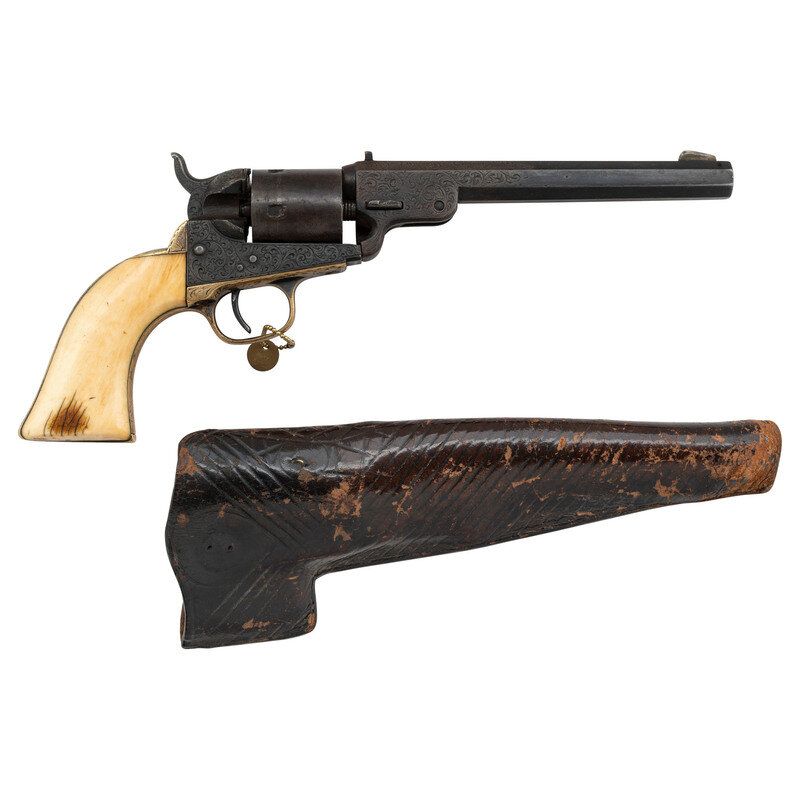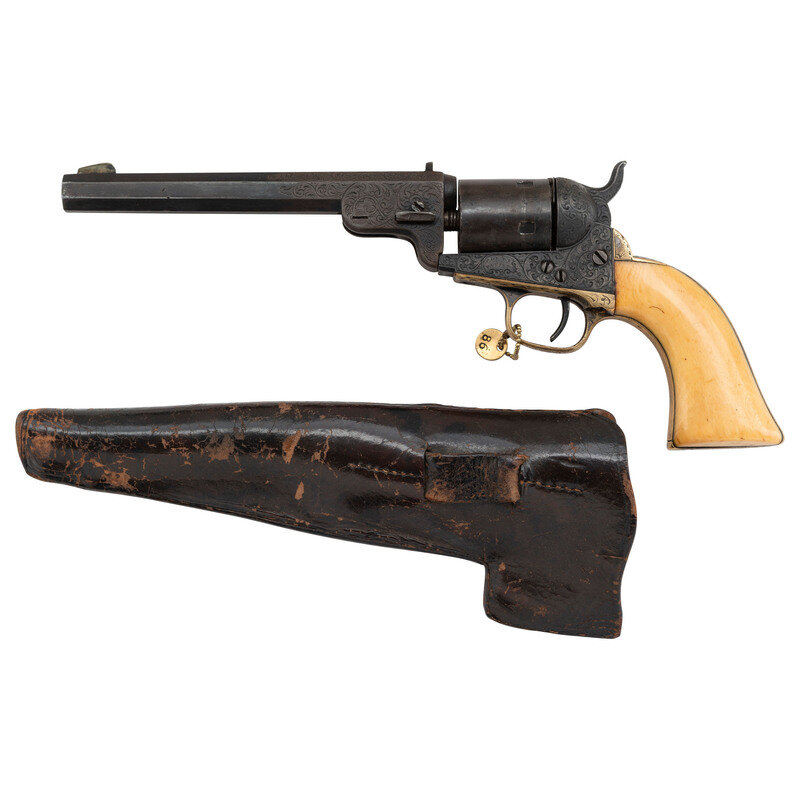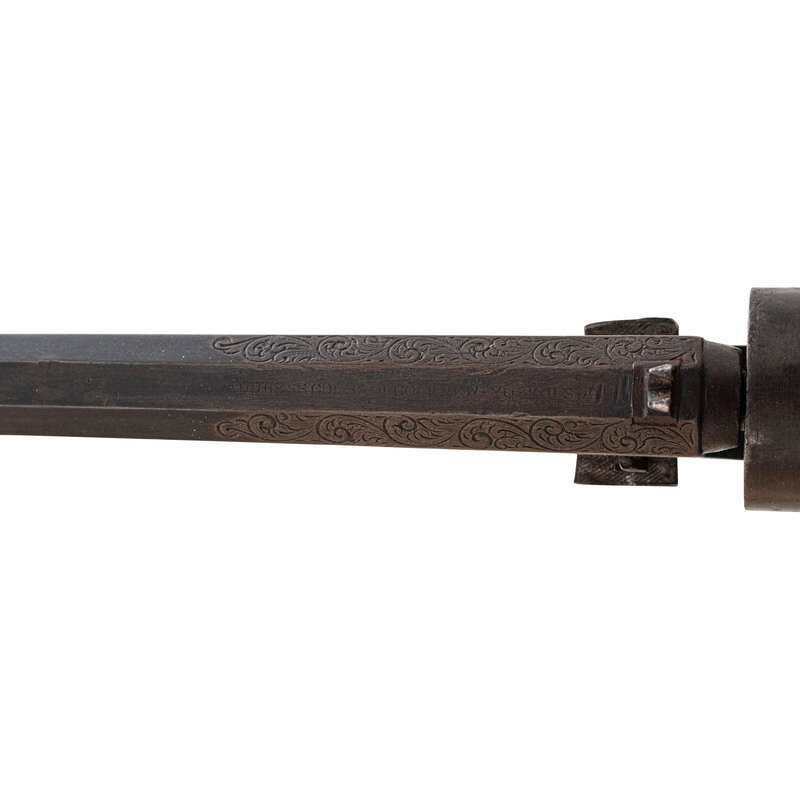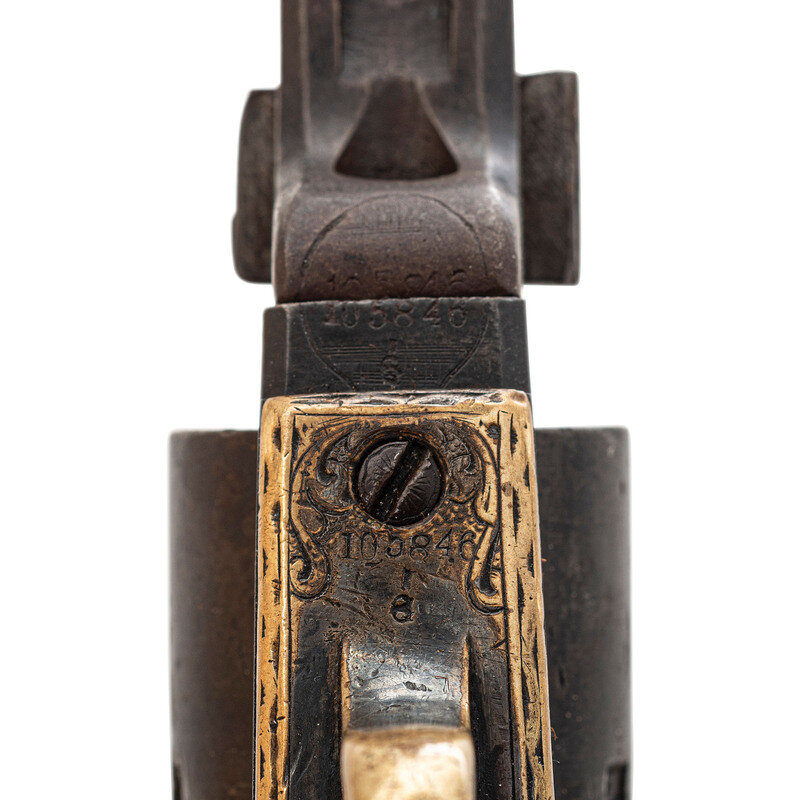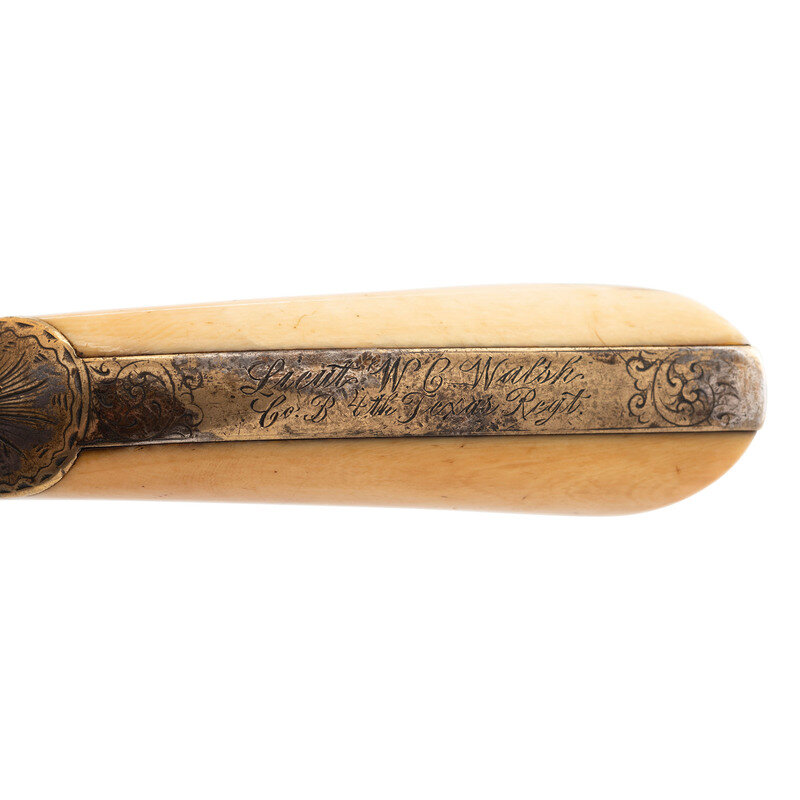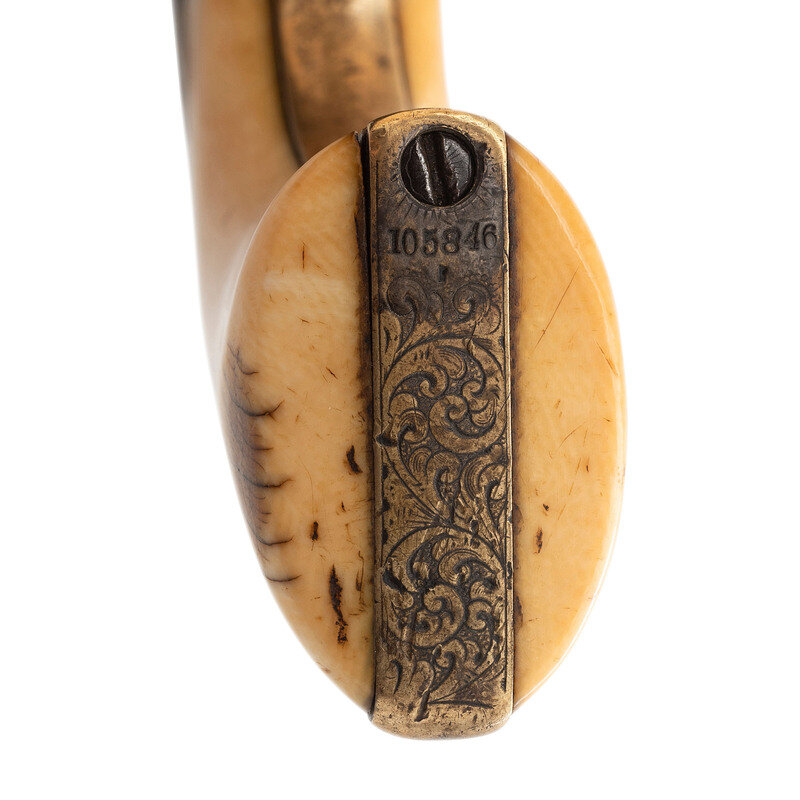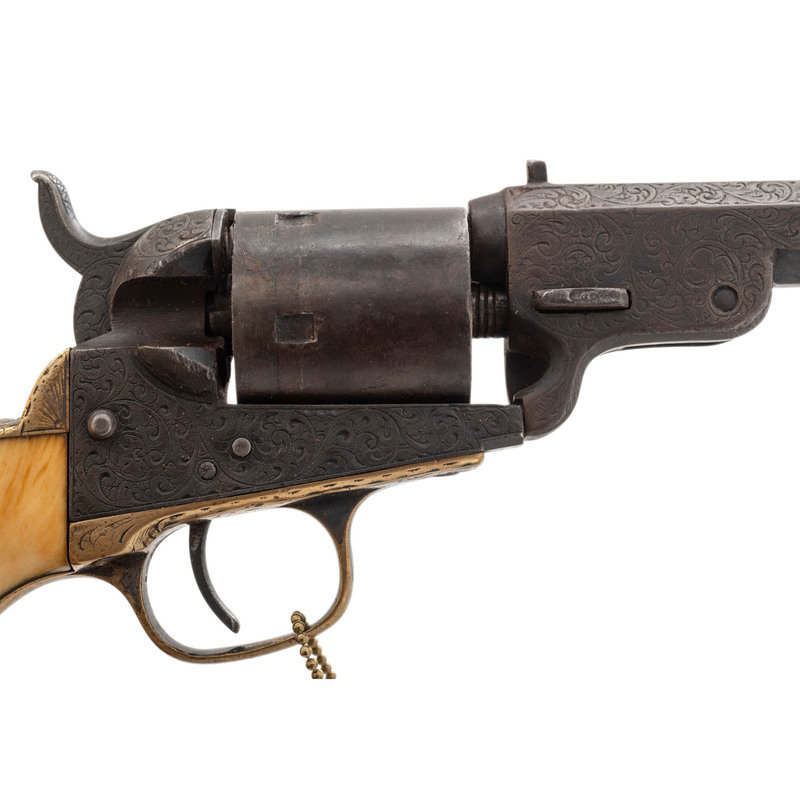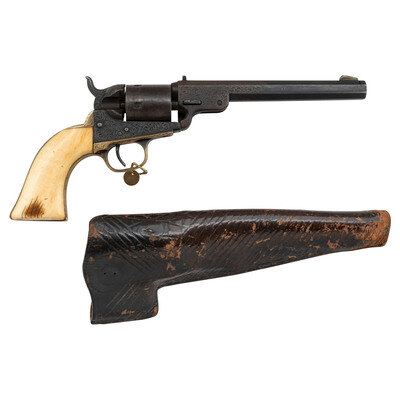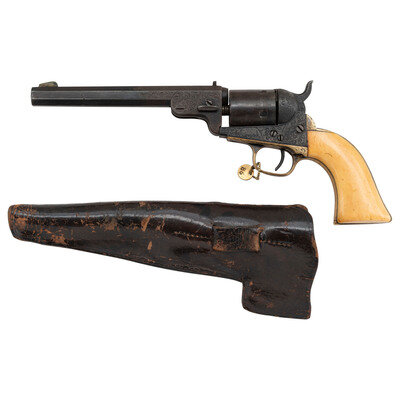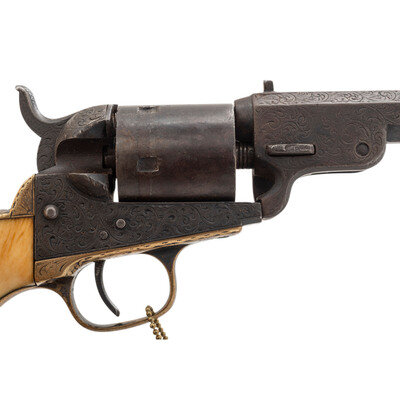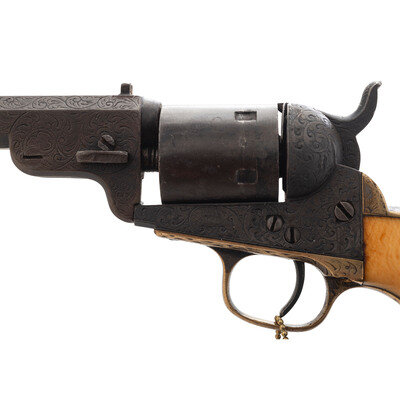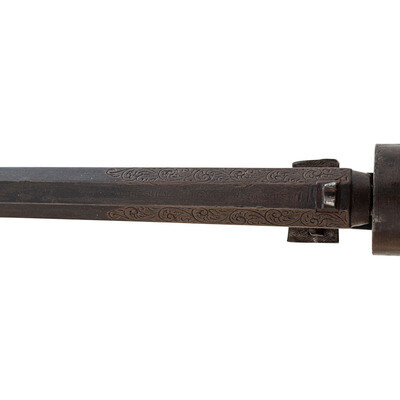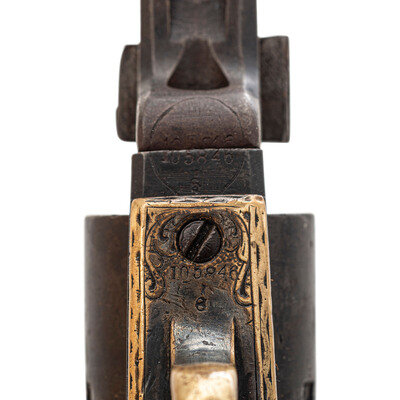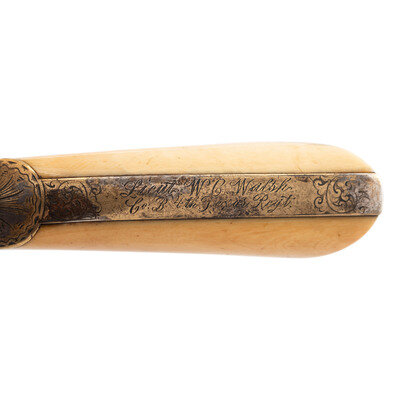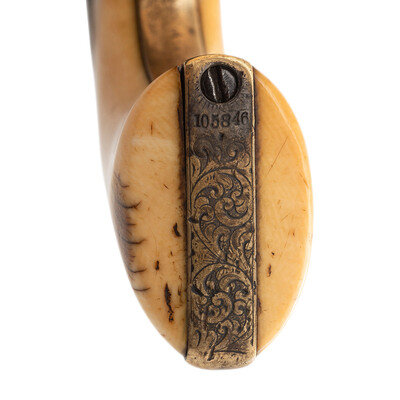Condition Report
Contact Information
Auction Specialists
Lot 48
Lot Description
.32RF. 5.875" octagonal barrel. SN: 105846 (mfg. ca1855). Blued and color casehardened finish with silver plated brass backstrap and triggerguard and smooth one-piece ivory grip. Single action cartridge conversion of a factory engraved percussion Colt pocket revolver with a smooth round five-chambered cylinder. The non-factory cartridge alteration was performed by replacing the original Colt percussion cylinder with a bored-through cartridge cylinder with rudimentary lead-in cuts on the stop notches, adding a spring plate on the face of the recoil shield that is similar to those found on some Manhattan Navy revolvers, enlarging the capping cut out in the frame to allow cartridges to be loaded and unloaded from the cylinder and by removing the loading lever and lever catch. Finally the hammer nose was altered with a rimfire firing pin attached and a fixed notch rear sight was dovetailed into the barrel just forward of the forcing cone to mate with a semi-Rocky Mountain German silver blade front sight near the muzzle. The addition of the rear sight was necessary since the original rear sight notch was lost when the hammer face was modified. The barrel is marked with a weak one-line New York address reading ADDRESS COL. SAML COLT NEW-YORK U.S.A. The lower left of frame has the two-line engraved COLTS/PATENT mark in an arc associated with factory engraved Colts of this period, in particular those done by Gustave Young. Matching serial numbers are found on the barrel, frame, triggerguard and butt. Wedge replaced, as is the cartridge alteration cylinder, neither of which are numbered. The one-piece period ivory grip is not numbered either. The serial numbers all have small "I" marks under them indicating factory ivory and engraved and also have a small a small "6" under the "I" a mark typically only found on ivory and engraved guns produced at Colt circa 1855. The gun is factory engraved with tight doughnut floral scrolls with many of the doughnuts terminating in flower blossoms. The frame and recoil shield in particular are profusely engraved with nearly complete coverage, with the barrel engraved through the web and for the first 1.5 inches forward of the wedge. The hammer is engraved as well with the traditional "wolf's head" that is often associated with the work of Gustave Young. A very similarly engraved and ivory gripped Colt Pocket (#105820) is pictured in Jordan & Watt's Colt's Pocket '49 book on page 209 and is only 26 numbers from this example. The engraving is of the quality and style that makes it likely that Young engraved this gun as well. The backstrap is engraved Lieut. W.C. Walsh/Co B 4th Texas Regt. The revolver includes a period embossed leather Slim Jim holster. A large binder of information about Walsh, including copies of his service records, are included with the gun and holster.
William C Walsh (1836-1924) was born in Dayton, OH on September 23, 1836 but relocated to Austin, TX with his family in 1840. He attended Georgetown University and returned to Texas to work in the General Land Office in 1857. With the outbreak of the Civil War he left his governmental work to become the 1st Lieutenant of the Tom Green Rifles of Travis County, later re-designated as Company B of the 4th Texas Infantry. The regiment was part of John Bell Hood's famed "Texas Brigade" which also included the First and Fifth Texas Infantry. The Fourth Texas saw their first combat during the Peninsula Campaign in Virginia, fighting at Eltham's Landing on May 7, 1862. On June 27, at the Battle of Gaines' Mill the regiment earned its reputation for hard fighting when it broke the Union lines on Turkey Hill. The regiment listed about 500 effectives that day and suffered roughly 17% casualties with 21 men killed, 63 wounded and 1 captured. Among the wounded was William Walsh who was in command of Company B that day. He was severely wounded in the hip and he would use crutches to walk for the rest of his life. Due to the disability, Walsh was removed from field service and took command of the post in Austin, TX and in 1864 was made Quartermaster General of Texas.
After the war he worked numerous jobs ranging from hauling wood and operating a rock quarry to running a farm. His ardent Democratic leanings kept him from accepting any patronage from the post-war Republican governors of Texas. In 1873 he was elected the Chief Clerk of the Texas House of Representatives, a position he served in until 1878 when he was appointed Commissioner of the Texas General Land Office. Walsh remained active in public service through his post-war career. With his accomplishments including the surveying of the land that was granted to the University of Texas, helping with the design and architecture of the Texas State Capitol, serving on the public works board for the design and building of the Austin Dam, and serving as the president of the Board of Managers for the John Bell Hood Confederate Veteran's camp from 1888-1918. Walsh was instrumental in the construction of a Confederate Soldier's Home in Austin as well. Today Austin's Walsh boat docks and ramp are named for him. Walsh died in 1924 at the age of 87.
